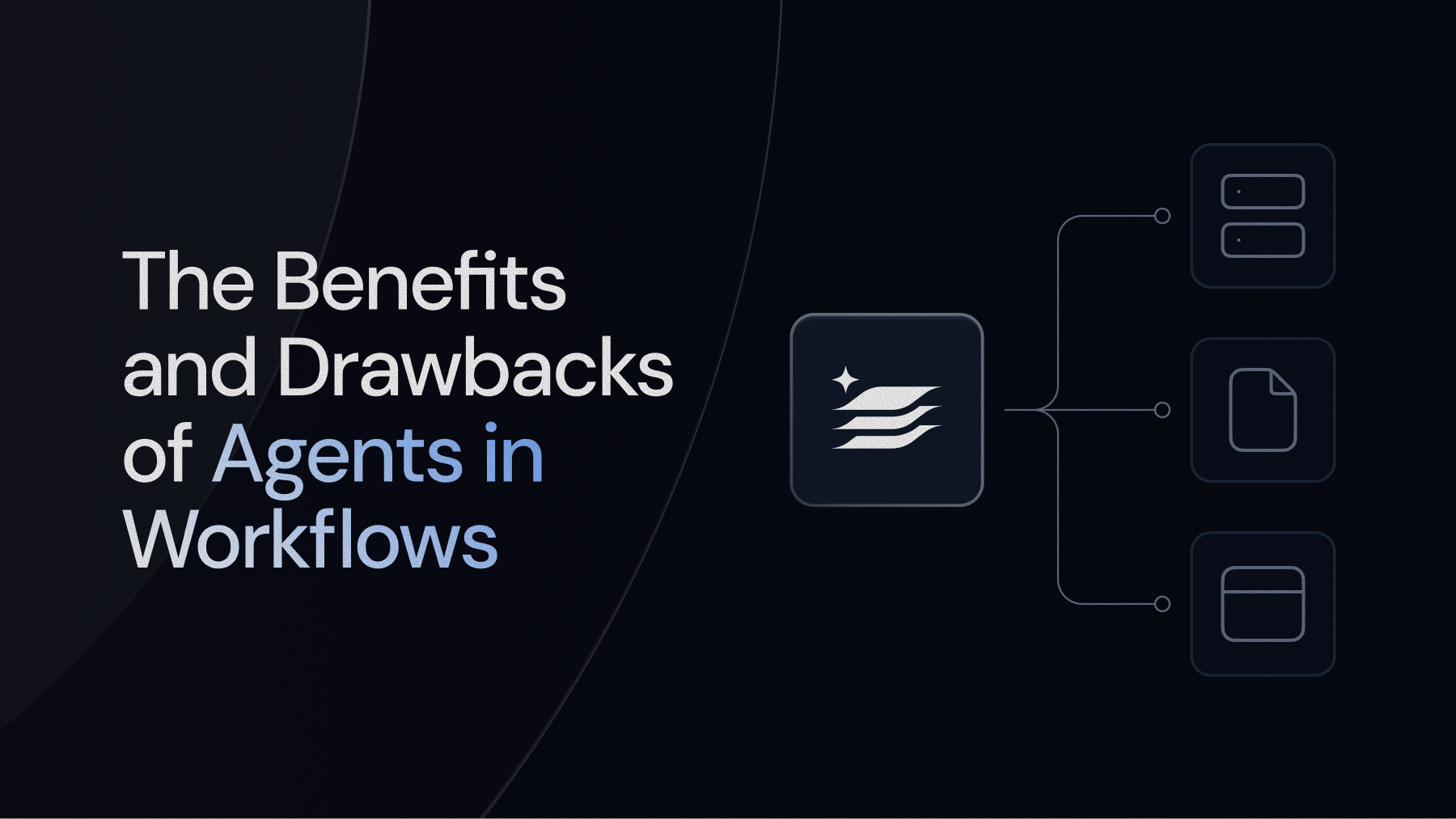
Artificial Intelligence (AI)
The benefits and drawbacks of AI Agents in workflows
Tim Prugar
•
Oct 2, 2025

The benefits and drawbacks of AI Agents in Workflows
Some of the biggest buzz in artificial intelligence today is around the rise of AI agents, agentic AI, and agentic workflows. At fileAI, we not only build agentic workflows, but also help our customers improve their own agentic workflows by making fileAI’s systems and technology agentically accessible through APIs and the Model Context Protocol (MCP).
As excitement around agents continues to grow, it’s important to take a clear, level-headed view of both their benefits and their drawbacks. Like many technologies, the strengths of agents can also become weaknesses, depending on how they’re deployed.
What Are Agentic Workflows?
Before pivoting into tech and becoming a Head of Product and Engineering, I was a classroom teacher. One of the most important lessons I learned during that time is that students perform best when given clear, specific, and unambiguous directions for a finite task.
Agents are no different. The more vague the instruction, the more room for interpretation. The more “greenfield” the problem space, the more likely you’ll get a creative but unpredictable solution. At the same time, the student (or in this case, the agent) may just as easily go off-task, fail, or produce disruptive results.
This framework is useful when thinking about how to apply agent-based systems in enterprise AI workflows, which is something fileAI specializes in.
The Benefits of AI Agents
1. Automating Repetitive Tasks
One of the greatest benefits of agents is their ability to automate repetitive tasks. By taking on routine work—such as inbox management, compliance checks, or document processing—they free employees to focus on areas that require insight, intelligence, and creativity. This shift enables teams to dedicate their time to high-value business processes and strategic initiatives rather than manual operations.
2. Adaptability and Flexibility
Agents excel at adaptability. They can learn and improve over time, and their applicability extends across a wide range of domains. Whether you’re optimizing a supply chain in retail, running legal document review, or managing healthcare administration workflows, agents are malleable and capable of making context-based decisions in ways that static, rules-based systems cannot.
3. Scalability and Efficiency
Agents can run a high volume of parallel tasks, often outperforming human capacity in rapid, synchronous operations. Unlike people, they don’t fatigue, and their performance remains consistent. This makes them ideal for scaling enterprise workloads without sacrificing reliability.
The Drawbacks of AI Agents
1. Complexity of Implementation
Just as in a classroom where instructions must be clear, effective agents require the same precision. Building them means treating each agent like a full-fledged software system. That involves considering edge cases, access controls, and system monitoring. The technical and organizational overhead can be significant.
2. Reliability and Trust Concerns
Mistakes or failures can be catastrophic if an agent is responsible for sensitive tasks like financial transactions or regulatory compliance. Unlike humans, agents don’t always interrogate bad data before acting. Because it’s impossible to anticipate every possible action, enterprises must invest in robust monitoring, auditing, and fallback systems.
3. Cost and Vendor Lock-In
Agents’ compute and infrastructure demands aren’t negligible, especially at scale. Enterprises must consider not only ongoing infrastructure costs but also the risk of vendor lock-in, where reliance on a single provider limits future flexibility. Any efficiency gains must be weighed against these financial and strategic considerations.
Balancing Potential with Practicality
Agents and agentic workflows hold tremendous potential, but they also come with real challenges. At fileAI, our Product Development team strives to balance the excitement around automation with the realities of scalability, precision, accuracy, and trust.
It’s a fun problem—and we’re solving it every day for our customers.

The benefits and drawbacks of AI Agents in workflows
AI agents promise automation, adaptability, and scale—but they also come with risks like complexity, reliability, and cost. In this blog, TIm breaks down the real benefits and drawbacks of agentic workflows, and how fileAI helps enterprises navigate both.


.png)
Business Type
Location
Company Size
fileAI feature highlights
Artificial Intelligence (AI)
Author
Tim Prugar
Date
October 2, 2025